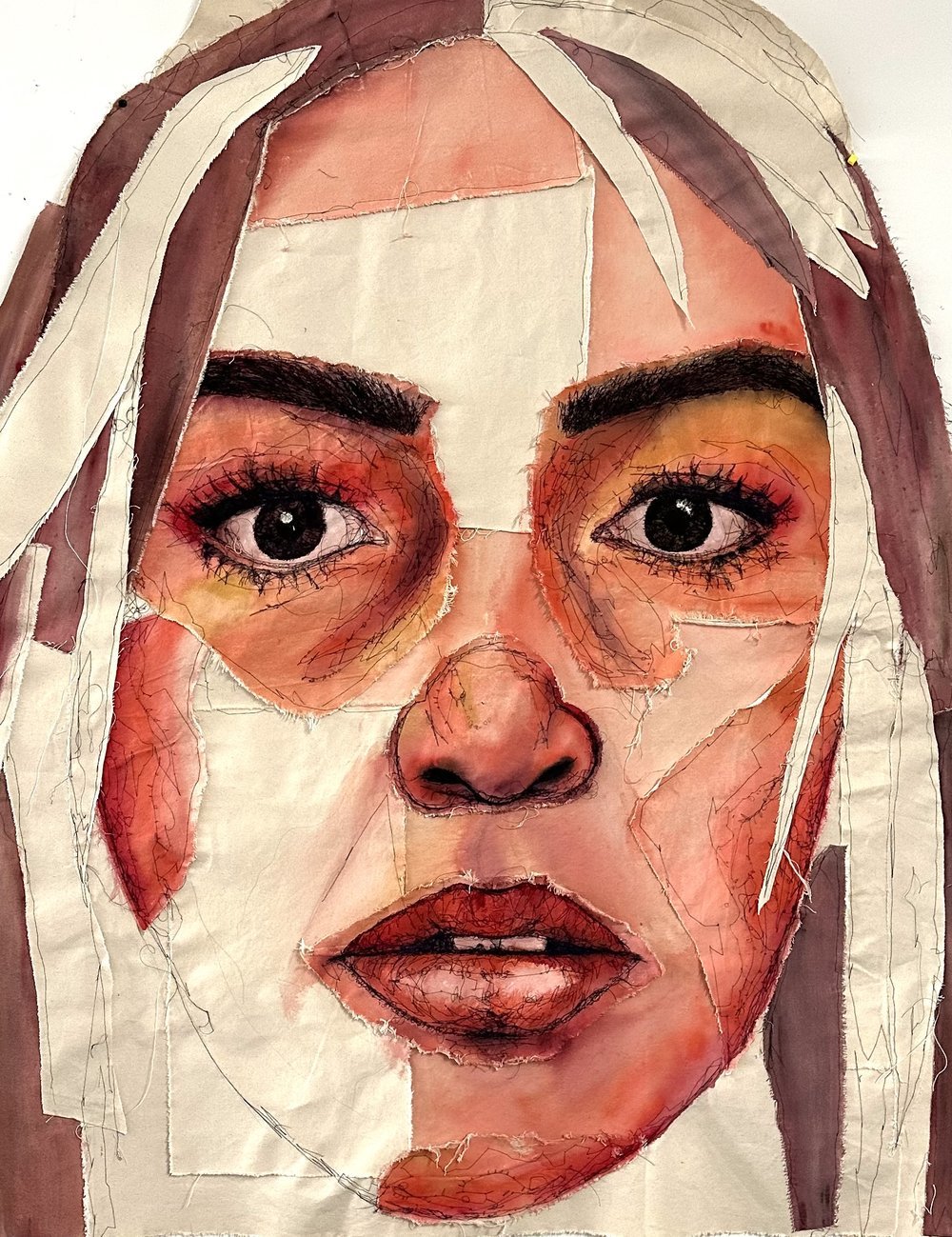Brandi Kole: Unraveled and Rewoven
I spent two days looking at Brandi Kole’s work online, and while I haven’t met her or spoken with her, I feel like I’ve been in a conversation with her art. It’s layered and deeply personal—built from fabric, thread, and torn materials that hold memory the way skin does. There’s a rawness to her process, an immediacy that comes from making images with a sewing machine rather than a brush or a pencil. Instead of smoothing things over, she lets the threads loop and fray, leaving behind a record of movement, tension, and release.
Brandi’s work exists somewhere between drawing and sculpture. She stitches figures onto fabric, but the results aren’t delicate or decorative in the way one might expect from traditional embroidery. The lines are rough, the edges unfinished. Sometimes the portraits seem to be unraveling, as if they’re in the middle of becoming something else—or falling apart entirely. There’s a vulnerability in that, a willingness to let process and imperfection take center stage. It makes you lean in, trying to understand where one thread ends and another begins.
There’s also a distinct sense of self-examination in her work. She turns the act of sewing—historically associated with domestic labor and invisibility—into a form of self-expression, reclaiming it as something incredibly powerful. Her figures often appear fragmented, as if stitched together from different moments or emotions. The materials she uses—fabric, vinyl, torn paper—add to this feeling, reinforcing the idea that identity isn’t fixed but pieced together over time.
The physicality of her technique mirrors the subject matter she explores. Her portraits—often of women, often of herself—convey strength and fragility in equal measure. They’re not straightforward likenesses; they’re emotional landscapes, built from layers of texture and material. The stitched lines pull and stretch, suggesting movement, tension, or even struggle. In some works, the figures feel bound by the very medium used to create them. In others, they seem to be breaking free.
Looking at Brandi’s work, I kept thinking about how textiles have always carried meaning. Clothes, blankets, tapestries—fabric is personal. It touches the body. It absorbs history. At my house upstate, we have quilts made by one of my husband’s relatives around the time of the Civil War—objects that feel less like decorations and more like vessels of memory. Brandi’s work leans into that, using fabric not just as a surface but as a subject in itself. She doesn’t just make images; she builds them, layering thread and material the way memory accumulates over time. There’s something deeply human about that—something tactile and imperfect, like the way a story shifts with each retelling.
Brandi’s work resists easy categorization. It isn’t just fiber art. It isn’t just drawing. It isn’t just portraiture. It’s all of those things and none of them at the same time. What makes it compelling is that it feels necessary, like she’s using thread to stitch together something she can’t say any other way. It’s art that feels lived-in, full of history, full of presence. And after two days of looking at it, I can say this for sure: it stays with you.


